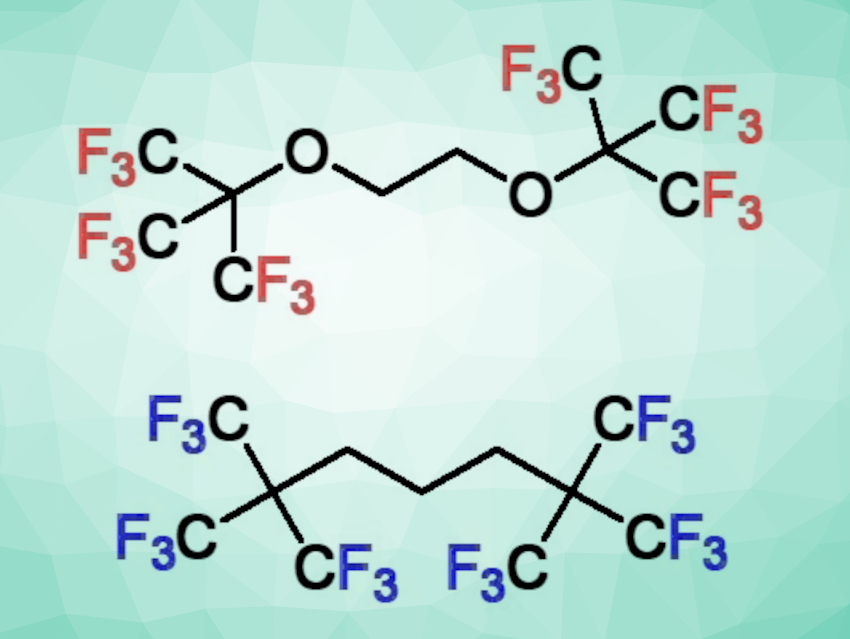Fluorine-19 magnetic resonance imaging (19F MRI) can be used to gather a wealth of diagnostic information. To use this imaging method, it is necessary to introduce a fluorine-containing substance into the organism—a 19F MRI label. Its location in the body can then indicate areas of inflammation or tumor tissues. Such a label should offer high contrast (i.e., a sufficient number of fluorine-19 atoms to be detected by MRI) and be nontoxic as well as rapidly excreted from the body.
Lev L. Gervits, A. N. Nesmeyanov Institute of Organoelement Compounds of the Russian Academy of Sciences, Moscow, and colleagues have synthesized two dumbbell-like molecules (pictured), each containing two perfluoro-tert-butyl groups with a hydrocarbon spacer between them, to be used as 19F MRI labels. The team prepared 1,2-bis(perfluoro-tert-butoxy)ethane (C10F18H4O2) via a reaction of a perfluoro-tert-butanol alcoholate with ethylene glycol dimesylate. 1,3-Bis(perfluoro-tert-butyl)propane (C11F18H6) was obtained via the reaction of a perfluoro-tert-butylanion (formed from perfluoroisobutene in the presence of cesium fluoride) with dibromopropane.
The synthesized compounds have a high number of magnetically equivalent fluorine atoms (18 each) and they are nontoxic. Thus, they can be used as 19F MRI labels. The hydrocarbon fragment imparts the molecules with a certain degree of lipophilicity, which allows for a higher rate of excretion from the body. In-vivo 19F MRI studies on rats showed that the substances provide high contrast properties, good biological inertness, and the ability to be quickly eliminated from the body.
- High‐Contrast and Fast‐Removable 19F‐MRI Labels with Perfluoro‐tert‐Butyl Substituents,
Lev L. Gervits, Andrey L. Sigan, Alina A. Markova, Mikhail V. Gulyaev, Olga S. Pavlova, Ratislav M. Ozhiganov, Yury A. Pirogov,
ChemMedChem 2023.
https://doi.org/10.1002/cmdc.202300239




